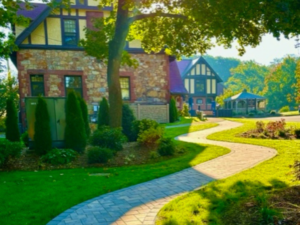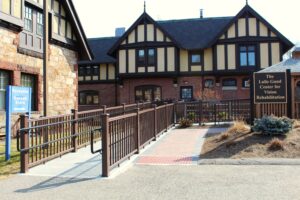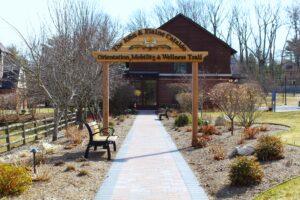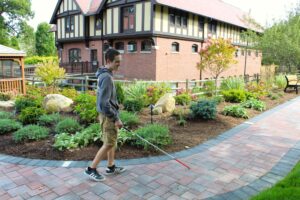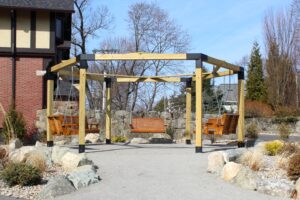The John and Elaine Cataldo Orientation, Mobility and Wellness Trail
Orientation & Mobility training can be one of the most liberating experiences in the life of a person with vision loss. This training helps people who are blind or visually impaired develop travel concepts and an understanding of their physical environment, and empowers them to navigate their surroundings and move around their world with confidence. The first Community Mobility Program was established at the Carroll Center for the Blind in 1952 to teach white cane skills to children, teens, adults, and seniors, and the Carroll Center remains a leader in Orientation & Mobility training today.
To enhance the Carroll Center’s Orientation and Mobility training program and address clients’ emotional well-being that supports their adjustment to blindness, we are building an Orientation, Mobility and Wellness Trail on our campus in Newton, MA. This trail will serve as a tool for teaching white cane, guide dog and navigational techniques, and provide an area that addresses clients’ emotional health. More about this multifaceted trail can be found below.
Pathway
A new pathway that clients can access from the main entrance off Centre Street to the entrances of the Lulie Gund Center for Vision Rehabilitation and St. Paul dormitory protects individuals from driveway traffic, ultimately enhancing the safety and wellness of those we serve. It also includes various grades, turns, and surfaces that make it an ideal training tool for our Orientation & Mobility instructors.
Accessible footbridges
Reconstruction and improved accessibility of two pedestrian footbridges will enable our clients to safely navigate their way into the Center’s main building, The Lulie Gund Center for Vision Rehabilitation. The footbridges will be a continuation of the Orientation, Mobility and Wellness Trail and will provide two ground surface types – cement and wood – that enhance the training experience.
Orientation & Mobility Trail
The Orientation & Mobility Trail will offer training space for Orientation & Mobility instruction that allows clients to practice in a safe environment. The trail will incorporate a crosswalk with bump dots, and multiple grades, curves, ground surface types, and obstacles that simulate what clients may encounter in their community. The trail will bring a piece of the real world to the safety of our campus, ultimately preparing clients to master and experience travel complexities that exist near and far, creating new hope, confidence and skills.
Wellness Area
Improving emotional well-being is critical for the clients we serve to support their adjustment to significant vision loss. This unique area of the trail will focus on health and well-being by offering a quiet area to relax or socialize with peers, listen to a water source or sounds of nature, and enjoy a relaxing break from robust activities.
This Swinging with Alvin area includes a hexagonal swing system, water source, and sculpture garden, offering the perfect setting for clients to heal and reflect. A quiet outdoor space for individual and social gathering is a major property improvement for clients in our robust residential-based programs for all ages, where life-long friendships and support networks are born.
